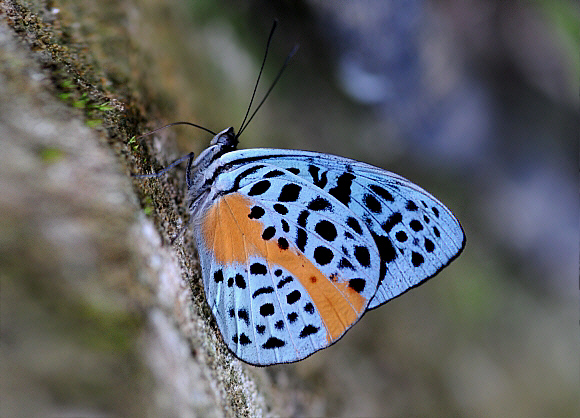 Eunica chlororhoa chlororhoa, Satipo, Peru – Peter Maddison
Eunica chlororhoa chlororhoa, Satipo, Peru – Peter Maddison
Introduction
The genus Eunica contains 40 species. They are popularly known as Purplewings because the males of most species reflect a dazzling purple or metallic blue iridescence from the upper surface of their wings. Females lack the iridescence, and are typically an earthy brown colour with a diagonal white band across the forewings. The underside hindwings of most species are beautifully marbled, and bear a distinctive arrangement of ocelli.
Eunica chlororhoa differs from most other Eunica species because the upperside of males reflects a metallic olive sheen rather than the more usual intense blue or purple.
There are 2 subspecies of chlororhoa, namely mira which is found from Honduras to Colombia, and chlororhoa which is found in Ecuador and Peru.
Habitats
Eunica chlororhoa inhabits rainforest at elevations between about 200-1000m.
Lifecycle
The lifecycle of Eunica species in general is poorly known and I can find no published details of the early stages of this species. The eggs of most Eunica species are laid singly on the flowers and leaf buds of trees including Mabea ( Euphorbiaceae ) and Bursera ( Burseraceea ). The larvae are likely to vary considerably in colouration and pattern from species to species, but generally have short spines along the sides, and a single row of longer erect spines on the last 3 segments of the body.
Adult behaviour
Males inhabit light gaps within the forest, and adopt territorial perches, typically on the foliage of low branches, from which they dart out at high speed to intercept other passing butterflies. Unlike the males of most other Eunica species they do not mud-puddle in open sunlight, preferring instead to imbibe moisture from the shaded side of mossy boulders and rocky overhangs.
